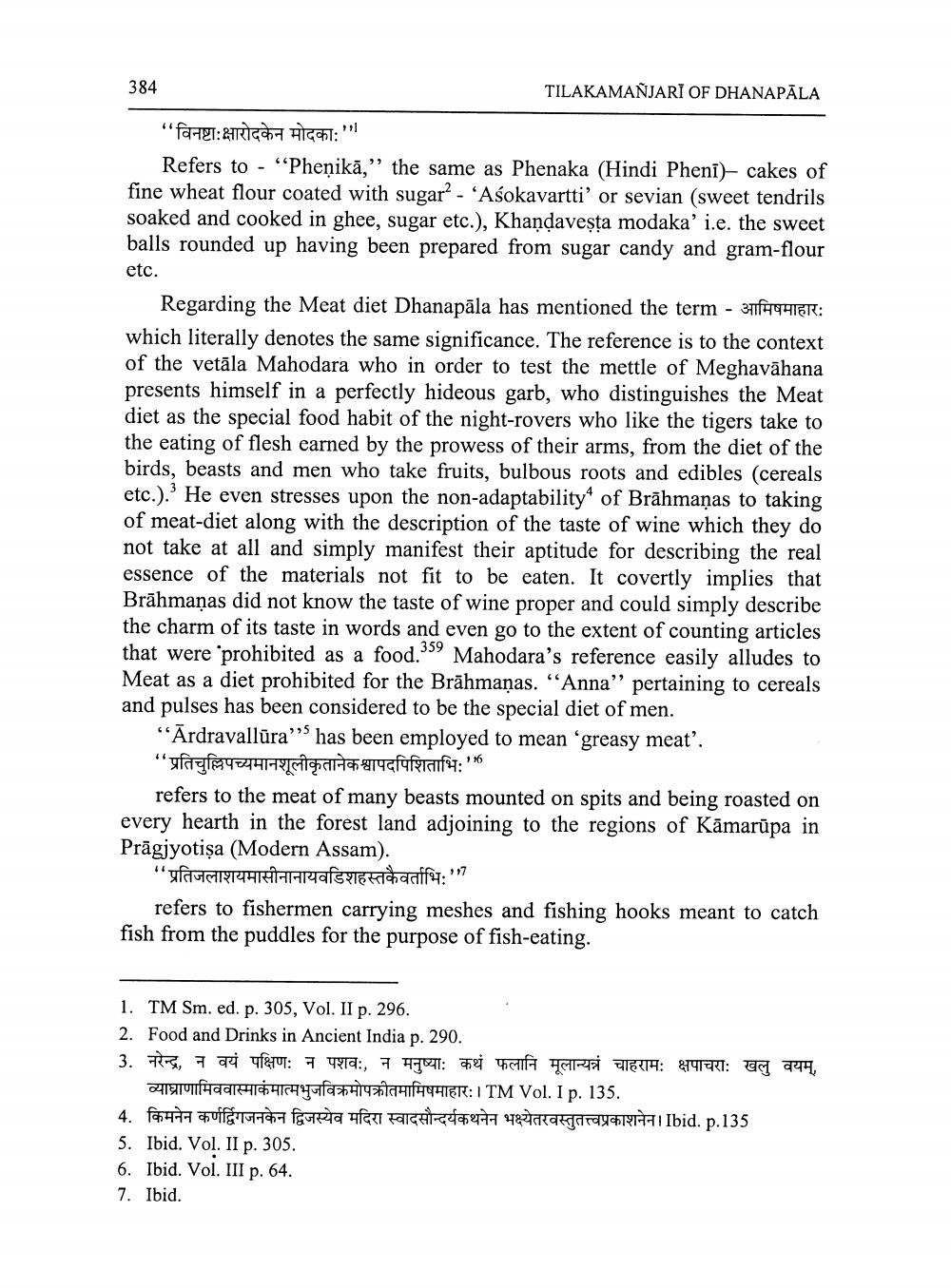________________
384
TILAKAMANJARĪ OF DHANAPĀLA
"FAHET: AIRIGH HIGCHT: ''!
Refers to - "Phenikā," the same as Phenaka (Hindi Pheni)- cakes of fine wheat flour coated with sugar? - Asokavartti' or sevian (sweet tendrils soaked and cooked in ghee, sugar etc.), Khandaveşta modaka' i.e. the sweet balls rounded up having been prepared from sugar candy and gram-flour etc. ___Regarding the Meat diet Dhanapala has mentioned the term - आमिषमाहारः which literally denotes the same significance. The reference is to the context of the vetāla Mahodara who in order to test the mettle of Meghavāhana presents himself in a perfectly hideous garb, who distinguishes the Meat diet as the special food habit of the night-rovers who like the tigers take to the eating of flesh earned by the prowess of their arms, from the diet of the birds, beasts and men who take fruits, bulbous roots and edibles (cereals etc.). He even stresses upon the non-adaptability of Brāhmaṇas to taking of meat-diet along with the description of the taste of wine which they do not take at all and simply manifest their aptitude for describing the real essence of the materials not fit to be eaten. It covertly implies that Brāhmaṇas did not know the taste of wine proper and could simply describe the charm of its taste in words and even go to the extent of counting articles that were prohibited as a food." Mahodara's reference easily alludes to Meat as a diet prohibited for the Brāhmaṇas. “Anna'' pertaining to cereals and pulses has been considered to be the special diet of men.
“Ardravallūra' has been employed to mean 'greasy meat "प्रतिचुल्लिपच्यमानशूलीकृतानेकश्वापदपिशिताभि:16
refers to the meat of many beasts mounted on spits and being roasted on every hearth in the forest land adjoining to the regions of Kāmarūpa in Prāgjyotisa (Modern Assam).
" SIHIGH Rafetia caffet:'7
refers to fishermen carrying meshes and fishing hooks meant to catch fish from the puddles for the purpose of fish-eating.
1. TM Sm. ed. p. 305, Vol. II p. 296. 2. Food and Drinks in Ancient India p. 290. 3. नरेन्द्र, न वयं पक्षिणः न पशवः, न मनुष्याः कथं फलानि मूलान्यन्नं चाहरामः क्षपाचराः खलु वयम्,
22 :18Hyufa4141441f444ER:1 TM Vol. I p. 135. 4. 1964-19 auf greta faz FAIGHT 477 47827aadaraya Ibid. p.135 5. Ibid. Vol. II p. 305. 6. Ibid. Vol. III p. 64. 7. Ibid.




